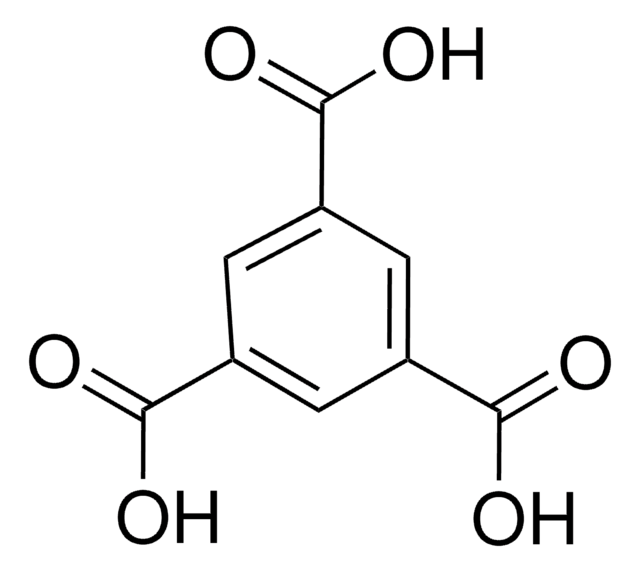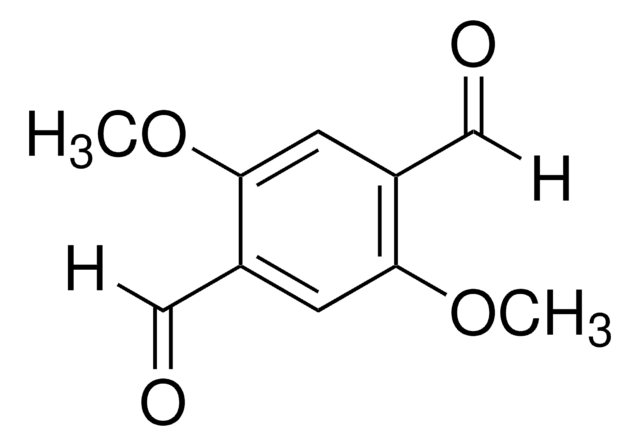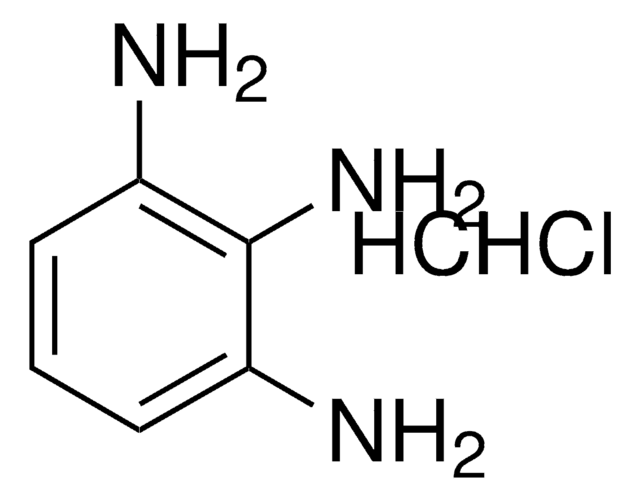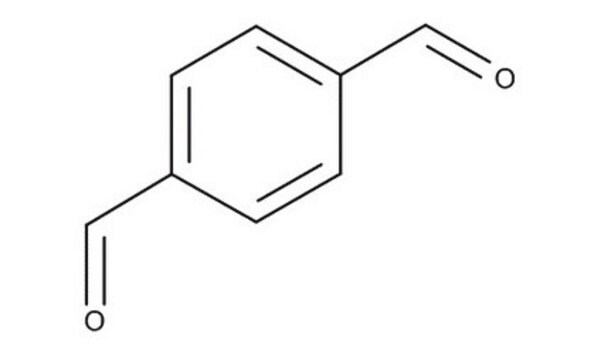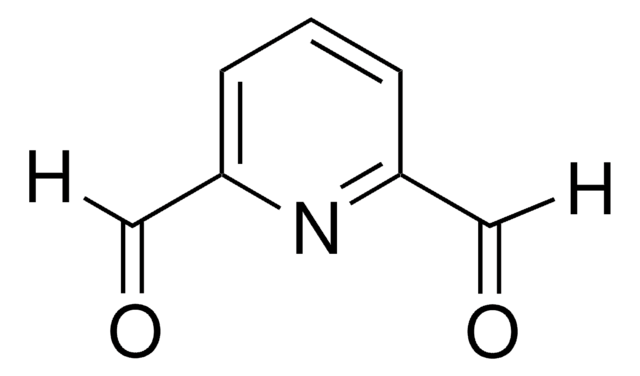753491
Benzene-1,3,5-tricarboxaldehyde
97%
Sinonimo/i:
1,3,5-Triformylbenzene, Trimesaldehyde
Autenticatiper visualizzare i prezzi riservati alla tua organizzazione & contrattuali
About This Item
Formula empirica (notazione di Hill):
C9H6O3
Numero CAS:
Peso molecolare:
162.14
Numero MDL:
Codice UNSPSC:
12352100
ID PubChem:
NACRES:
NA.22
Prodotti consigliati
Livello qualitativo
Saggio
97%
Forma fisica
solid
Punto di fusione
156-161 °C
Temperatura di conservazione
2-8°C
Stringa SMILE
O=Cc1cc(C=O)cc(C=O)c1
InChI
1S/C9H6O3/c10-4-7-1-8(5-11)3-9(2-7)6-12/h1-6H
AEKQNAANFVOBCU-UHFFFAOYSA-N
Applicazioni
Benzene-1,3,5-tricarboxaldehyde is extensively used in the synthesis of a wide range of porous organic cages and covalent organic frameworks.
Avvertenze
Warning
Indicazioni di pericolo
Consigli di prudenza
Classi di pericolo
Acute Tox. 4 Oral - Eye Irrit. 2 - Skin Irrit. 2 - STOT SE 3
Organi bersaglio
Respiratory system
Codice della classe di stoccaggio
11 - Combustible Solids
Classe di pericolosità dell'acqua (WGK)
WGK 3
Punto d’infiammabilità (°F)
Not applicable
Punto d’infiammabilità (°C)
Not applicable
Scegli una delle versioni più recenti:
Possiedi già questo prodotto?
I documenti relativi ai prodotti acquistati recentemente sono disponibili nell’Archivio dei documenti.
I clienti hanno visto anche
Exploring the gem-dimethyl effect in the formation of imine-based macrocycles and cages.
Madhu S, et al.
New. J. Chem., 41(17), 8721-8724 (2017)
Jun-Hui Zhang et al.
Journal of chromatography. A, 1426, 174-182 (2015-12-04)
Porous solids composed of shape-persistent organic cage molecules have attracted considerable attention due to their important applications such as molecular separation, heterogeneous catalysis, and gas storage. In this study, an imine-linked porous organic cage (POC) CC10 diluted with a polysiloxane
Shan Jiang et al.
Nanoscale, 11(31), 14929-14936 (2019-07-31)
Porous Organic Cages (POCs) are an emerging class of self-assembling, porous materials with novel properties. They offer a key advantage over other porous materials in permitting facile solution processing and re-assembly. The combination of POCs with metal nanoparticles (NPs) unlocks
Bogdan Florin Craciun et al.
Molecules (Basel, Switzerland), 24(8) (2019-04-25)
When studying polyethylenimine derivatives as nonviral vectors for gene delivery, among the important issues to be addressed are high toxicity, low transfection efficiency, and nucleic acid polyplex condensation. The molecular weight of polyethylenimine, PEGylation, biocompatibility and, also, supramolecular structure of
A Perspective on the Synthesis, Purification, and Characterization of Porous Organic Cages.
Briggs M E and Cooper A I
Chemistry of Materials, 29(1), 149-157 (2016)
Il team dei nostri ricercatori vanta grande esperienza in tutte le aree della ricerca quali Life Science, scienza dei materiali, sintesi chimica, cromatografia, discipline analitiche, ecc..
Contatta l'Assistenza Tecnica.






